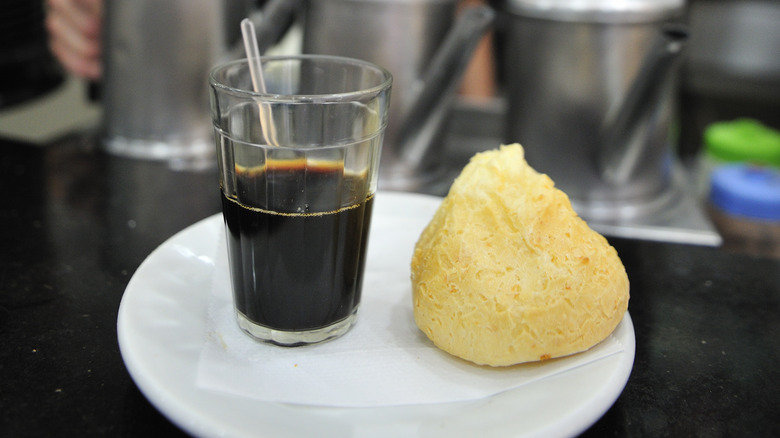When It Comes To Coffee In Brazil The Cafézinho Reigns Supreme
While traveling to Brazil, Frommers recommends you get ready for lots of affection with a kiss or hug, followed by a warm, "tudo bem?" (Portuguese for "everything's well?"). An inviting people, the Consulate-General of Brazil in Chicago swears by the culture's hospitable nature. And that's why you're liable to be offered a cup of coffee, even at the hairdresser or dentist.
As the world's largest producer of coffee, the beans are grown in 14 major regions spanning seven of Brazil's states, according to Perfect Daily Grind. So, much like the pineapple is synonymous with Southern hospitality in the U.S., coffee is Brazil's way of extending the warmest of welcomes, according to I Need Coffee. But don't be surprised if you spot even children enjoying a sip of the nation's drink of choice throughout the day, as its commonplace for all ages to savor it, according to Speaking Brazilian Language School.
Make no mistake, this isn't your average cup of Joe — it's cafèzinho. Although, the term denotes a small cup of the Brazilian brew, which can vary slightly depending on the region (via Speaking Brazilian Language School). But for Brazilians, it's more than a beverage, it's also a ritual, according to Casa Brasil Coffee. However, the drink can be pretty stout if you're not familiar with the traditional technique. So, to understand why Brazilians treasure it so much, you must start with learning the specifics of making and serving cafézinho.
How to make and serve cafézinho
You could make it using a standard paper filter and a regular type of cup, but then you'd be missing out on the ritual of cafézinho. A traditional cafézinho filter is small and usually has a wooden handle with an undyed cloth for straining, according to Talk About Coffee. While finding cafézinho filters might be a challenge in the U.S., they can easily be found in many Latin markets or online retailers. Just remember to rinse and hang the filter to dry, but never wash it with soap. There's not much difference between espresso and cafézinho cups, so either one is suitable for sipping. Don't even be surprised if you see it served in a small glass or plastic cup, as it isn't meant to stay there long.
Despite the difference in the filter, the method is essentially the same as any pourover coffee, except that cafézinho is exceptionally strong. You simply need water, finely ground coffee, and sugar (rapadura), per Coffee Affection. Bring the water and sugar to a boil before adding the coffee straight to the mixture while stirring. But I Need Coffee insists you reserve a pan specifically for making cafézinho and straining the brew through a cloth filter.
Talk About Coffee adds that cafézino is served black and pretty sweet, but adding a skosh of cream or additional sugar is completely appropriate. Raise your cup with a big "Saúde!" and enjoy.

